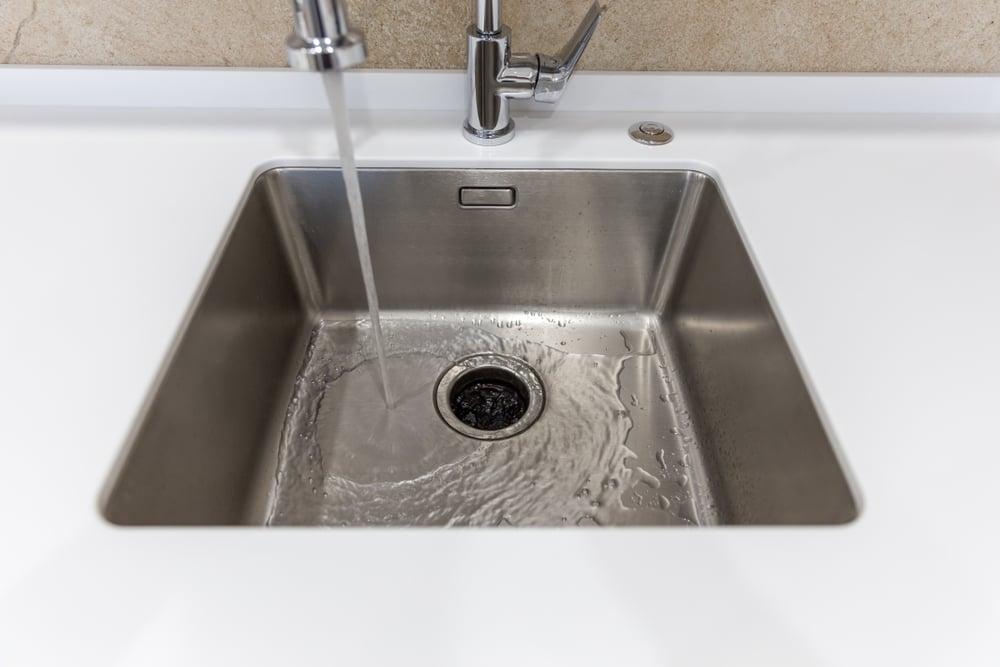We've come across this article about How to fix a pretty consistent leak from my garbage disposal down the page on the net and felt it made perfect sense to talk about it with you over here.

Waste disposal unit are crucial cooking area home appliances that assist in taking care of food waste effectively. However, a leaking garbage disposal can be an aggravating and untidy trouble to deal with. Thankfully, many leakages can be repaired conveniently with a few basic steps. In this short article, we will certainly discuss exactly how to take care of a dripping garbage disposal efficiently.
Intro
Waste disposal unit are installed under kitchen sinks and are developed to shred food waste right into smaller sized pieces, allowing it to pass through the plumbing system easily. While these devices are typically trustworthy, leakages can happen gradually because of damage, loosened links, or damage to the unit.
Step-by-Step Overview to Dealing With a Dripping Garbage Disposal
Turn Off the Power
Prior to trying any type of repair work, ensure that the power to the waste disposal unit system is switched off to avoid the risk of electrical shock.
Locate the Leakage
Determine the exact place of the leak and figure out the reason
Tighten Links
Use a wrench to tighten any kind of loosened links between the disposal system and the pipes system.
Change Seals or Gaskets
If the leak is because of used seals or gaskets, remove the old components and replace them with new ones.
Patching Fractures or Holes
For fractures or openings in the disposal system, usage epoxy or an ideal patching material to seal the damaged area.
Identifying the Source of the Leak
Before attempting to deal with a dripping waste disposal unit, it is vital to recognize the resource of the leakage. This can normally be done with visual evaluation or by conducting basic tests.
Visual Inspection
Evaluate the waste disposal unit system carefully for any kind of indications of water leakage. Pay attention to locations around seals, gaskets, and connection factors.
Evaluating for Leakages
One method to examine for leaks is by running water via the disposal unit and looking for any noticeable indications of leak.
Common Root Causes Of Leakages in Trash Disposals
Worn Seals and Gaskets
Seals and gaskets play a critical role in stopping water from dripping out of the waste disposal unit. Gradually, these parts can deteriorate, resulting in leaks around the disposal system.
Loose Links
The links in between the waste disposal unit and the plumbing system can end up being loosened with time, creating water to leakage out throughout procedure.
Fractures or Holes in the Disposal Unit
Physical damage to the waste disposal unit, such as splits or holes in the housing, can also cause leakages.
Devices and Products Needed for Taking Care Of a Leaking Garbage Disposal
Prior to beginning the fixing procedure, gather the essential devices and materials, consisting of a screwdriver, adjustable wrench, plumber's putty, substitute seals or gaskets, and epoxy or patching material for repairing fractures or holes.
Checking the Waste Disposal Unit After Repair Service
As soon as the repair work is full, test the waste disposal unit by running water via it to make sure that the leakage has been solved.
Preventive Upkeep Tips to Avoid Future Leaks
To avoid future leaks, it is important to execute regular upkeep on your waste disposal unit. This consists of maintaining it tidy, preventing placing non-food products or difficult items down the disposal, and regularly checking for leakages or various other problems.
Final thought
To conclude, repairing a leaking waste disposal unit is a fairly straightforward process that can be finished with standard devices and materials. By following the actions described in this article and exercising precautionary upkeep, you can keep your waste disposal unit in good working problem and prevent pricey repair services in the future.
What to Do About a Leaking Garbage Disposal
A leaking garbage disposal often goes unnoticed until you confront a sopping cabinet, a foul-smelling puddle, or an audible drip-drip-drip from the unit. The fix can be frustrating, too, because the leak can stem from a number of components in the system. Fortunately, with a little sleuthing, you can zero in on the leak and—depending on the exact location—stop the icky oozing and repair the component that caused it. Worst case scenario, if it turns out that the garbage disposal must be replaced, installing a new one is a reasonable do-it-yourself task for those with basic plumbing skills. Read on to keep the cash you’d otherwise hand over to a pro.
Prepare to find the leak
Prior to testing the garbage disposal for leaks, unplug it at the wall outlet and turn off the power from the breaker box to prevent electrical shock. Then insert a watertight sink stopper into your sink drain and wipe the unit dry with a clean cloth. In any handy container, mix a few drops of food coloring into a few cups of water, and pour the dyed water onto the sink stopper to help you locate the leak.
Investigate the source
the top, where the disposal meets the sink drain the side, where the dishwasher hose or main drain pipe connects to the disposal or the bottom of the unit Inspect each of these locations while gliding a light-colored rag over the unit; the dyed water will readily show on the rag and reveal the location of the leak. If a leak isn’t immediately apparent, remove the sink stopper and pour a few more cups of dyed water down the sink drain, then check for leaks again. Leaks near the top of the unit are more likely to show themselves while the sink is plugged, while side and bottom leaks are more noticeable while the sink is unplugged.
The metal sink flange that sits directly inside the sink drain is typically sealed around the top with plumber’s putty (a clay-like sealant) and then secured from under the sink with bolts. If the plumber’s putty deteriorates, or the bolts loosen, the flange can no longer form a watertight seal between the sink drain and the disposal—which could cause a leak at the top of the unit.
To reseal the leaky flange, you must first detach the garbage disposal. Start by loosening the screws securing the main drain pipe to the disposal, then loosen the screws in the metal clamp securing the dishwasher hose to the disposal and detach the drain pipe and dishwasher hose from the disposal. Loosen the screws in the mounting ring that connects the disposal to the metal mounting assembly beneath the sink, then pull down the disposal and carefully set it on a clean, dry surface. Loosen the bolts in the mounting assembly with a wrench, then pull down the mounting assembly and set it near the disposal.

As a keen person who reads on Tips on Fixing a Leaking Garbage Disposal, I figured sharing that excerpt was really useful. Sharing is good. Helping others is fun. Bless you for your time. Visit again soon.
Request An Estimate